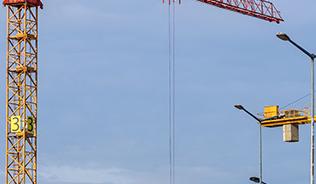The United Nations Decade of Ocean Science has been hosting discussions at this year’s COP28 on ocean climate solutions, with the aim to promote the role of science, media, technology and education to achieve ocean solutions for climate action and sustainable development.
Supporting blue carbon habitats will be an integral part of developing ocean-based solutions to the climate crisis. The Blue Carbon Initiative defines blue carbon as 'the carbon stored in marine and coastal ecosystems', typically this refers to the coastal blue carbon ecosystems of saltmarshes, seagrass meadows and mangroves. It has been argued that blue carbon discussions should be expanded to include other ecosystems, although more research is needed to determine their ability to sequester carbon.
In June 2023, the UK Blue Carbon Evidence Partnership published its Evidence Needs Statement , which outlined five key objectives where further evidence is needed to support UK blue carbon objectives:
Working towards the potential inclusion of saltmarsh and seagrass in the UK Greenhouse Gas Inventory
Encouraging and enabling investment in blue carbon habitats
Reducing the impacts of human and environmental pressures, including climate change risks, on blue carbon habitats
Managing coastal and marine habitats on a seascape scale, with consideration of land and marine connectivity
Achieving climate change mitigation, adaptation and biodiversity benefits from blue carbon habitats as nature-based solutions
Our UN Ocean Decade endorsed project, Turning the Tide: Systems thinking for a sustainable ocean , has focused on the theme of blue carbon for the last few months, bringing together the marine and coastal community to discuss blue carbon habitats, how they can be managed, and ways to harness blue carbon to mitigate climate change.
In our first event in this theme , we partnered with the UK Blue Carbon Forum and heard from Professor Hilary Kennedy about coastal blue carbon ecosystems and how they can support climate mitigation and provide other ecosystem services.
We then went on to explore blue carbon case studies across the world, partnering with Future Earth Coasts to focus on projects in China and Australia.
Finally, we held a roundtable discussion bringing together blue carbon experts from across academia, consultancy, public/civil bodies and NGOs to discuss key topics related to blue carbon.
Key drivers needed to harness blue carbon to mitigate climate change & achieve a sustainable ocean
The roundtable event we held to wrap-up this theme of the project featured rich discussion around some of the challenges in harnessing blue carbon for climate action as well as what the priorities should be to unlock the potential of blue carbon ecosystems in the UK and beyond.
The roundtable discussion was held in collaboration with Ocean and Coastal Futures (OCF) and was chaired by Dickon Howell from OCF. The event featured five expert panellists:
Tom Brook, Blue Carbon Technical Officer at WWF-UK
Dr Claire Evans, Research Fellow at the National Oceanography Centre
Dr Olivia Rendon, Environmental Economist at Plymouth Marine Laboratory
Harry Wright, Founder and Director at Bright Tide
Professor Graham Underwood, Chair of the UK Blue Carbon Evidence Partnership
The key areas of discussion are summarised below:
VIDEO
What next?
The next themes of our work on the Turning the Tide project are looking at the Blue Economy and Marine Conservation and Restoration. We have already kicked off these themes with a webinar on unlocking the sustainable blue economy , a guest blog post highlighting how GreenSeas Trust is fighting plastic pollution and a webinar exploring the resilience and restoration of the Thames Estuary .
Ways to get involved





